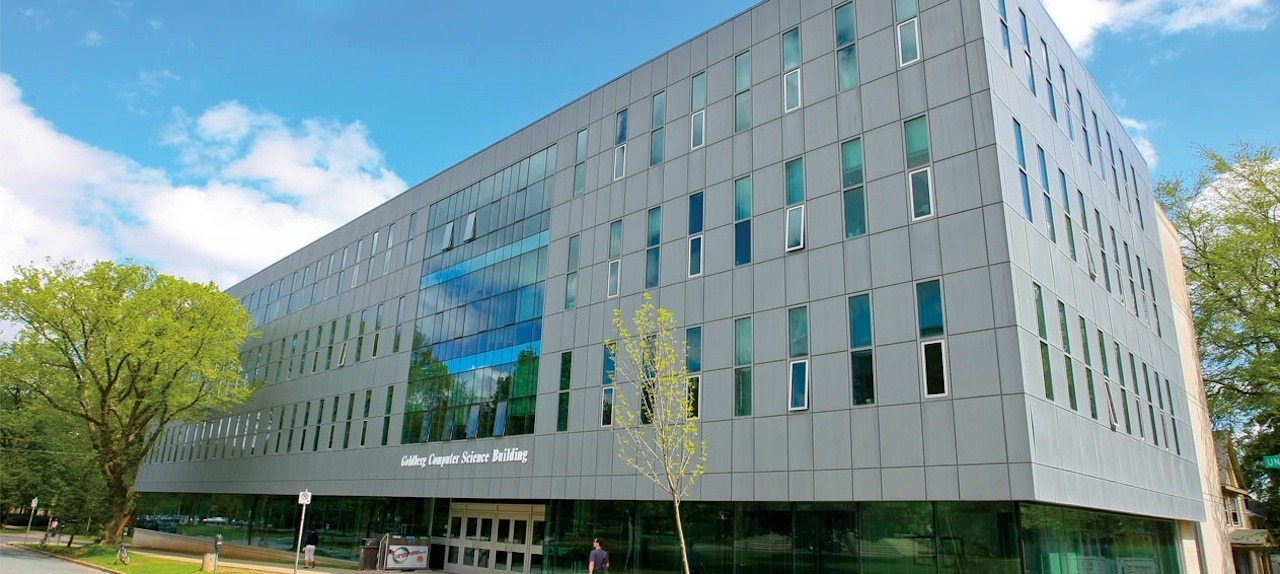» Go to news main
AI innovation makes for easier fish finding on tidal‑energy projects

Fish and bubbles have a lot in common when it comes to how they look when they are scanned by sonar devices used in monitoring marine environments. Differentiating the two has been a challenge for researchers and scientists trying to understand how tidal-energy devices affect marine life in the Bay of Fundy.
Now, thanks to a new software solution that accurately replicates what was once a time-consuming manual process, it’s taking half as long to achieve the same results.
The DeepSense team at Dalhousie is helping to make marine environmental monitoring for tidal energy projects easier, more reliable and more effective by creating custom applications for use by researchers and developers.
Their work is part of the Pathway Program — a technology development and testing initiative being led by OERA (Offshore Energy Research Association) and FORCE (Fundy Ocean Research Centre for Energy). Both organizations coordinate research related to tidal energy and FORCE operates a research site in the Bay of Fundy where developers can test devices.
Introducing Echofilter
Through the Pathway Program, expert researchers — including the members of the team at DeepSense — are identifying and validating preferred environmental monitoring solutions for tidal energy projects. DeepSense provides access to reliable ocean data using expertise in machine learning — a form of artificial intelligence that involves the study of computer algorithms that improve automatically through experience.
As part of their work on the Pathway Program, DeepSense has created Echofilter — a new software that uses artificial intelligence and machine-learning methods to automate processing of environmental monitoring results from echosounders, a type of sonar that uses sound to detect fish and other marine life.
Chris Whidden, an assistant professor in the Faculty of Computer Science, led Echofilter’s early planning and design.
“We worked very closely with FORCE and OERA to understand their unique challenges, propose an initial design and modify that design during the project,” he says. “The first step in using machine learning to improve business processes is understanding the data and where the biggest costs and time sinks are. This can be especially challenging in the ocean economy because of specialized sensors, proprietary processing software, and unique environmental features.”
Using these insights, Scott Lowe, a postdoc in computer science, used existing data to lead the creation of a machine-learning model, achieving significant time savings by automating the data review process.
“Our challenge was, can we automate that task, so a human doesn’t have to spend so long manually removing all of these bubbles from their data?” says Dr. Lowe. “The machine learning driven model that we trained is based on data. We trained the model by taking previous surveys that human experts have already annotated and asking the model to generate the same separation line around the entrained air as labelled by the human. After training, the model produces very similar separation lines as human annotators.”
Saving time
The code developed by DeepSense is now being used by FORCE. The FORCE team has run the software on multiple hydroacoustic datasets. It is estimated that the model reduces the human time spent on analyzing the hydroacoustic fish data collected in the Bay of Fundy by approximately 50 per cent.
Echofilter is one way that DeepSense is driving growth in the ocean economy through artificial intelligence, machine learning, and big data applied research, with the team’s work made possible through funding and support from Dalhousie University, the Atlantic Canada Opportunities Agency (ACOA), the Province of Nova Scotia, the Centre for Ocean Ventures and Entrepreneurship (COVE), the Ocean Frontier Institute (OFI) and IBM.
A webinar featuring a presentation by Jennifer LaPlante, Executive Director, DeepSense, and Dr. Chris Whidden, Assistant Professor, Faculty of Computer Science, Dalhousie University about the DeepSense team’s collaboration with FORCE and OERA will take place on March 25 from 1-2 p.m. ADT. Everyone is welcome to attend Automating the post-processing of noisy hydroacoustic fish surveying for monitoring tidal turbines – free registration is available here.
Recent News
- Dal‑led initiative aims to help crack the code on gender barriers in tech
- Leading the way: Dal’s 2024 university wide teaching award winners exemplify excellence in higher ed
- Impact Rankings 2024: Dalhousie ranks 65th globally for tackling some of the world's biggest issues
- Dal alumni who are now Canada’s rising business leaders point to common theme for success
- Dalhousie soars into top 18 per cent of universities in QS World University Rankings
- Grad profile: Finding community in the sandbox
- Grad profile: Breaking barriers beyond the classroom
- Shannex invests in healthy aging research at Dal with $2‑million gift
